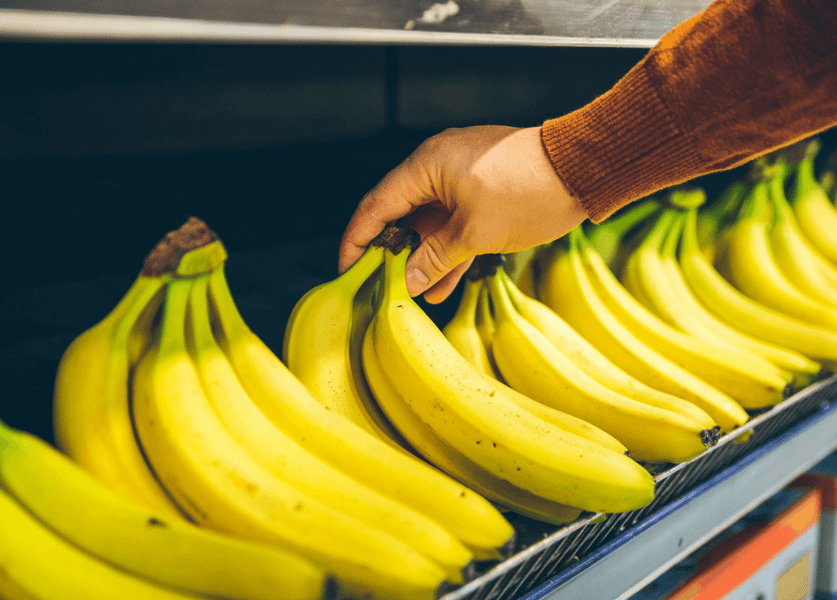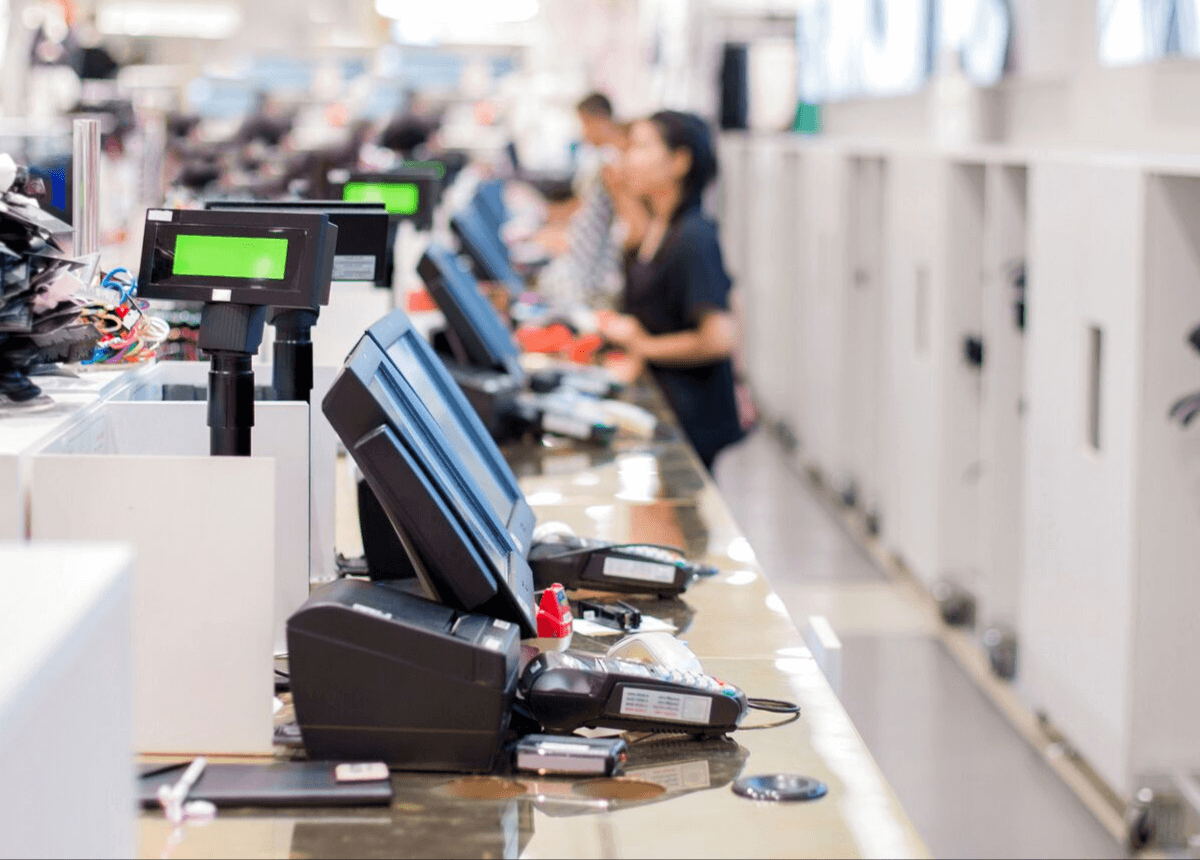"What's My Banana?" Applying the Banana Trick to Other Industries
General Rebecca Bouchard
Rebecca Bouchard

With today’s ever-increasing landscape of automated processes that are being deployed throughout the retail, grocery, restaurant, and convenience industries, many brands have shifted away from traditional cashier-run till lines in favor of self-checkout stations. With almost 90% of American consumers reporting having used a self-checkout lane before, there is no doubt that they are a favorite amongst consumers. In the wake of the COVID-19 pandemic, their popularity is only growing. Nevertheless, self-checkout lanes have provided shoplifters multiple avenues to steal as the absence of cashiers makes it easy to skip scanning products, swap barcodes, or utilize the “Banana Trick.”
The Banana Trick
The Banana Trick was originally discovered by grocers as a clever strategy used by shoplifters where a low-priced item, such as a banana, is manually keyed in or scanned while placing another, high-priced, object onto the scale or into their bags. In this way, the shoplifter seems to be paying for the stolen items from any outsiders' point of view and can easily go unnoticed by employees.
Many grocers have found instances of individuals using the Banana Trick at their self-checkout tills by utilizing the transaction data and reporting features within Agilence to pinpoint transactions where there are duplicate SKUs for low-cost products in a single transaction. By identifying instances of the Banana Trick, grocers are able to implement corrective measures quickly to minimize loss.
So, What Is My Banana?
In the case of grocers who are battling this crime, they use reports to define any instance where multiple SKUs are used on the same order, each scan of the SKU being under a certain dollar amount. From these reports, automatic alerts are sent to management to ensure a timely response. Another way of identifying what a company’s “banana” is, is to look at inventory by item and pinpoint any product with negative inventory as these items are scanned or manually keyed in more times than there is product in the store.
Much like grocery companies, convenience stores can utilize these same methods to identify instances of the Banana Trick within their stores. However, with a multitude of different low-priced items available for sale, pinpointing which products customers are using as their “banana” can become difficult. Due to the wide variety of products that may be targeted, when setting up reports and alerts through Agilence, it may be more beneficial to include all purchases which include multiple scans of the same SKU where the product is less than $1 rather than targeting a few specific products.
Nevertheless, identifying which products are most used as “bananas” can assist store operators in stopping crimes before they arise. Many customers will use the same banana for every item they are attempting to steal and, because of this, any customer attempting to steal multiple items in a single transaction will usually have multiple of the same low-cost item in their basket. When this information is combined with insights from CCTV video, shoplifters can be caught and quickly stopped.
While the Banana Trick was originally discovered by grocers, instances of theft using the Banana Trick can be found within the retail and restaurant industries as well. Determining what your banana is and how customers are applying the methods against your company can be vital in identifying instances of loss and developing ways to control this type of activity.
Retail
Within the retail space, there are a variety of different product and service categories that companies operate within. When searching for their banana, companies should look for items that are low in cost – typically under one dollar. Look at impulse items that are kept by the registers such as gum, mints, lip-balm, postcards, or candy. These items are easily accessible to shoppers and fit the price range of a shoplifter aiming to use the banana trick. If the company offers any pay-by-weight/quantity products, these items are commonly used as they can be manually keyed into registers, allowing shoplifters to avoid scanning products altogether. Additionally, codes used to ring up customer contributions to charitable organizations, bag fees, or other low-value look-up codes are ripe (pun intended) for the “banana” trick.
Another great way to find their “banana” is to utilize Agilence’s advanced grouping function to identify transactions that include multiple scans of the same low-priced items as many shoplifters will utilize the same “banana” for every item being stolen.
Once the “banana” has been identified, retailers can create reports to track transactions that include their “banana” and send automated alerts to management whenever a situation arises. From these alerts, management can quickly act by putting corrective measures in place to stop such behavior from occurring. One such solution for the self-checkout lanes is to offer those lanes for use exclusively to loyalty members or those with fewer than 10 items.
Restaurant
For restaurants where self-checkout is less common, the threat of the Banana Trick often presents as an internal threat rather than an external one. As staff members oversee ringing in the tab for their customers, any discrepancies in actual food or drink served versus the food charged for can be traced back to the employee who rang in the ticket. For example, if an employee’s close friend comes in to dine and orders a full meal but is only charged for a fountain soda, they have participated in a variation of the Banana Trick by intentionally charging the customer for a lower-priced product. Another variation on the Banana Trick for restaurants is ringing condiments instead of those higher-priced, server-accessible items.
In order to find employees who have participated in this variation of the Banana Trick, restaurant managers can utilize Agilence to create a report which targets those who are far below the average meal price. From this report, further investigation may show that this employee’s average is low due to their participation in the banana trick by intentionally substituting low-priced items for meals.
After determining what your banana is, reports and alerts can be used to find instances, where employees are using the Banana Trick and management, can assign corrective measures such as additional training to put a stop to the behavior. Reviewing order composition and averages to identify those servers whose orders stand out as exceptions because they don’t contain the same number of items, or the orders are less than their peers or simply orders that have condiments, but no meal, are examples of methods to identify this behavior in restaurants.
Why still offer self-checkout?
Self-checkout comes along with some risks, however, the benefits of keeping these systems widely outweigh these threats. In comparison with wages paid to cashiers and baggers, self-checkout systems commonly offset any loss that comes along with them. These machines also help during busy times to cut down lines and ensure every customer has access to a contactless shopping experience – overall increasing customer satisfaction.
Agilence helps users identify patterns in their transaction data and make informed decisions based on those insights, minimizing the impact on the business's bottom line. For many shoplifters, self-checkout abuse is a pattern and it is most likely not their first-time committing theft. The data analytics provided by Agilence help to find products that are targeted and those that are being used as a banana. By understanding the ways in which shoppers steal, companies can enjoy the benefits of self-service checkout while utilizing Agilence to identify the exceptions and resolve those issues that arise with ease.
We're sharing advice from 20 Loss Prevention and Asset Protection leaders that will change how the industry operates. Download your copy today.
Learn more about Loss Prevention & Asset Protection.
Related Articles

How to Spot and Stop Retail Employee Theft
Unfortunately, there’s no denying that employee theft is a reality of retail operations. Employee theft, also known as intern....png)
How to Determine if Employees are Skimming Cash
Cash is king when it comes to employee theft. Cash skimming is one of the most common forms of employee theft, also known as ...
The Profitable Retailer: 10 Essential Retail Metrics - and 5 More to Consider
Your brand has great products. Your employees provide outstanding service. Your customers come back for repeat business. You’...Subscribe to our blog
Receive free educational resources like exclusive reports, webinars, and industry thought leadership articles straight to your inbox.


